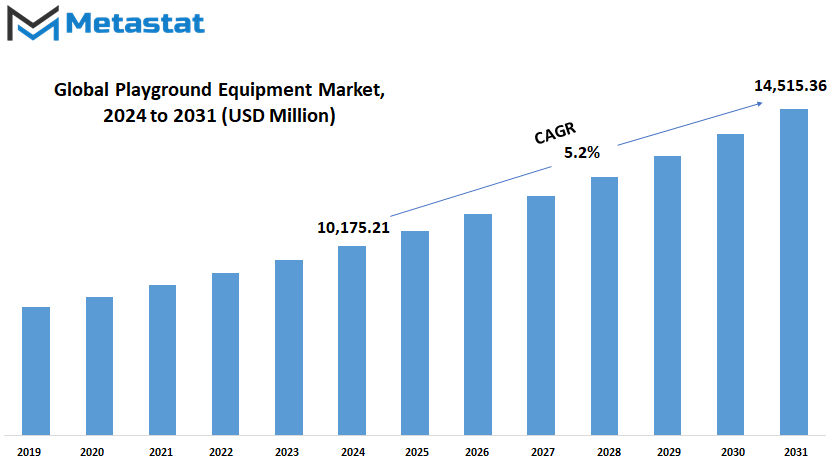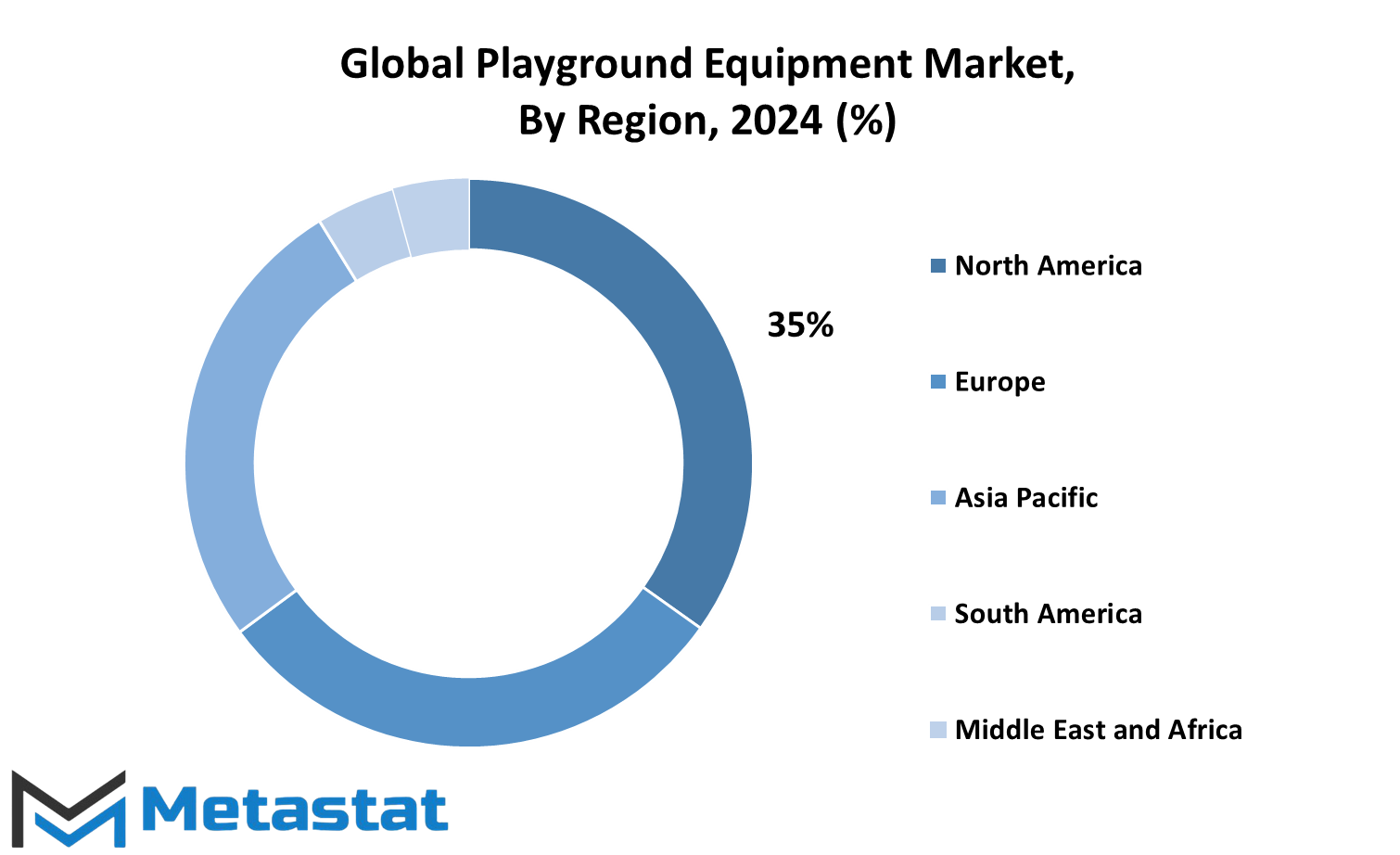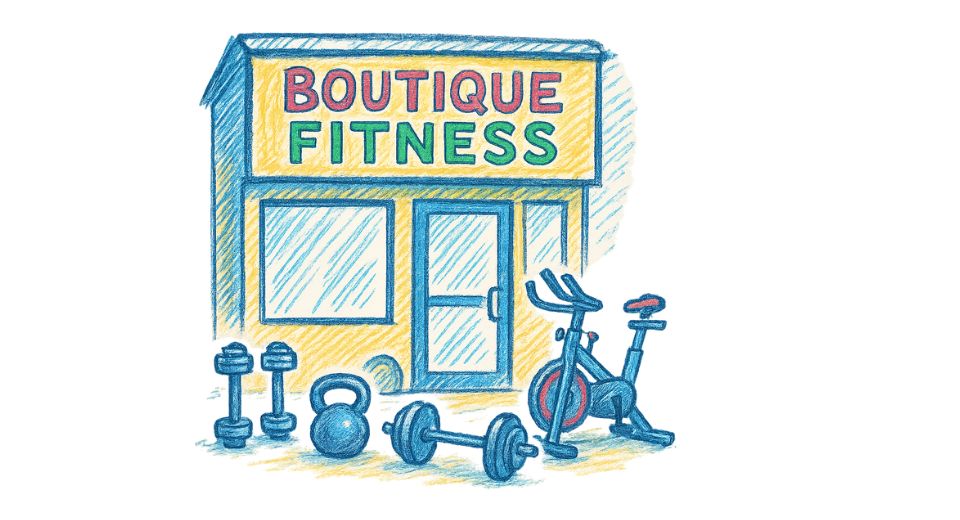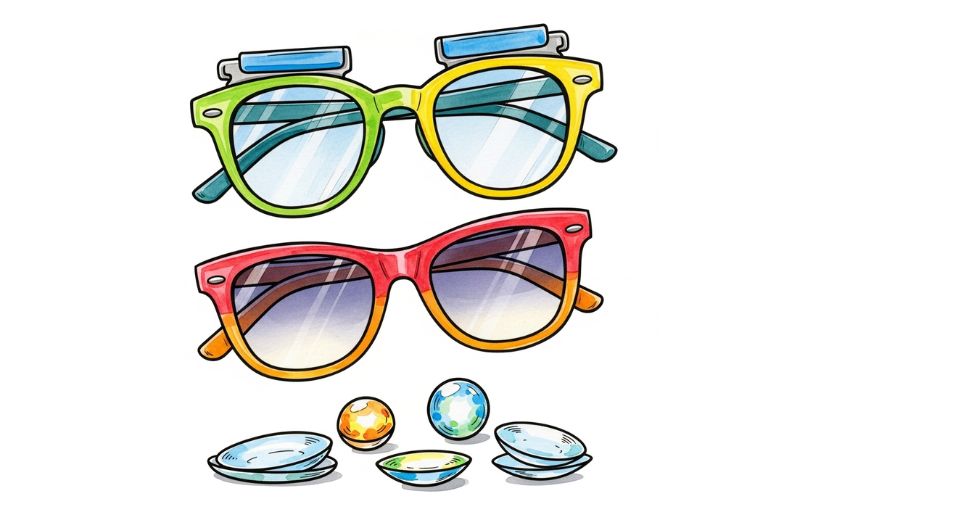MARKET OVERVIEW
The Global Playground Equipment market is a dynamic industry that deals with the designing, manufacturing, and distributing recreational apparatuses to outdoor and indoor spaces. The market serves various sectors such as public parks, schools, childcare centers, and private institutions with unique equipment requirements for each. It acts as a base for creating physical activity, creativity, and social interaction among children, with the added aspect of meeting safety and accessibility standards. While continuing their stride of growth, the more increasing awareness of outdoor lifestyle boosts the demand for playground equipment, the industry is most likely to change with altering preference and regulatory framework, ultimately serving as a playground equipment manufacturer.
The Global Playground Equipment market focuses on innovative fun and safety with durability and quality in its core principle. Products offered by players in this space include: slides, swings, climbing structures, and themed playsets. Modern designs often include interactive elements and technologies to enhance engagement. The market also caters to specific requirements, such as inclusive playgrounds for children with disabilities, making sure that play areas are accessible to all. This inclusivity not only addresses societal needs but also reflects the growing emphasis on designing spaces that promote holistic development.
The playground equipment industry is greatly influenced by government regulations and safety standards. The regulations in different regions vary, and they determine the materials used, the structural designs, and the installation processes to ensure the safety of users. Sustainable manufacturing practices are gaining popularity due to environmental concerns that compel stakeholders to adopt eco-friendly materials and processes. This change reflects the market’s potential to align with global sustainability goals while meeting customer demand for eco-friendly products. The Global Playground Equipment market comprises both traditional equipment and modernized systems that integrate technology.
From digitally interactive play panels to sensor-based systems, technology will redefine how children engage with playgrounds. Urban landscapes, limited by space, will likely experience compact, multifunctional designs for smaller areas. Such designs would aim at fulfilling the wants of urban planners in denser areas by maximizing recreational usage opportunities. Cultural and regional preferences also shape the market in terms of what sort of equipment becomes popular in given areas. For example, weather-resistant equipment may be a primary need in colder climates while warm regions may require a greater emphasis on shade-integrated structures to address the concerns of heat.
The differentiation requires flexibility among manufacturers so they can adapt their offerings effectively for localized demands. The future of the Global Playground Equipment market will likely be about more innovation in product design as well as manufacturing practices. It will be about smart technologies, sustainability, and rigorous safety measures. Aligning with the demands of consumers and tackling the challenges that come from urbanization, the market is expected to grow to offer play solutions that meet various demographic and geographic needs. The Global Playground Equipment market is essentially a niche industry that specializes in offering essential recreational solutions addressing issues of safety, access, and environmental considerations. The market will continue on this trajectory as societal priorities and advancements in technology shape its development path forward, innovating and adapting to ensure the place of play spaces as an integral part of global community development.
Global Playground Equipment market is estimated to reach $14,515.36 Million by 2031; growing at a CAGR of 5.2% from 2024 to 2031.

GROWTH FACTORS
The global playground equipment market is set to boom, driven by increasing awareness of the role physical activity plays in children's development and well-being. Parents, educators, and policymakers are placing a stronger emphasis on outdoor play, recognizing it as a cornerstone of physical health, social skills, and cognitive development. This has seen an increasing demand for more innovative and long-lasting playground designs that take into account diverse age groups and safety as well as the involvement of children.
There is an evident need for modern playgrounds in urban and residential areas. With increasing populations, cities have been becoming crowded, and creating space where children can play safely has become a priority. Manufacturers have come up with equipment that not only meets high safety standards but also creative and inclusive designs. Technology, interactive elements, and accessibility features are changing the face of how playgrounds are conceived, ensuring they cater to a broader range of users and offer engaging experiences.
However, the market faces challenges that may temper its growth. High installation and maintenance costs are major deterrents, especially for smaller communities with limited budgets. Additionally, safety concerns and the need for regulatory compliance regarding material quality and design standards add layers of complexity to the market. These issues often require manufacturers and developers to balance innovation with stringent quality checks, which can increase costs and prolong development timelines.
Despite these challenges, future prospects for the global playground equipment market seem bright, primarily because of the increasing presence of eco-conscious consumer sentiments. Environmental concerns are going to increasingly require sustainable and 'eco-friendly' playground solutions; recycling, renewable energy ingredients, and low environmental-impact design are trends well placed to be promising future developments. These developments address environmentally conscious consumers but at the same time also align well with the global sustainability trend.
The combination of these factors will imply a dynamic future in the playground equipment industry, expanding this market further while taking account of current challenges and innovating opportunities for it. The drive for more safety and engagement and sustainability for the playgrounds will thus push more developments into those places. As this market evolves, it will play a vital role in shaping how communities prioritize and support the well-being of their youngest members.
MARKET SEGMENTATION
By Product Type
The global market for playground equipment is slated to experience significant growth and change, driven by an array of innovative trends, including increased investment in outdoor play facilities. As a society becomes more aware of the importance of physical activity and outdoor recreation, its demand for diverse and entertaining playground equipment has skyrocketed. The market valuation is expected to reflect this growth by 2024, with segments such as swings, slides, and climbing frames continuing to hold a prominent position in terms of revenue.
Swings, one of the most traditional and widely loved playground staples, is expected to reach a valuation of USD 2,456.85 million in 2024. Its popularity is fueled by universal appeal to children of all age groups and the continuous innovations that enhance their safety and functionality. Slides are another essential component that are expected to reach USD 2,053.67 million. With advances in materials and designs, slides are becoming more exciting and safer for children while making parents feel comfortable.
Climbing frames, with an estimated value of USD 1,579.00 million, are in great demand as they enhance physical development and problem-solving abilities. Seesaws and rockers, with a projected value of USD 1,009.61 million, are also a source of fun and cooperative play. These apparatuses focus on social interaction and are, therefore, highly featured in contemporary playgrounds.
Smaller yet significant segments include spring riders and merry-go-rounds, valued at USD 529.39 million and USD 506.21 million, respectively. These items cater to younger children, promoting balance and coordination while providing a sense of adventure. Meanwhile, playhouses and forts, expected to reach USD 964.89 million, encourage imaginative play, a trend increasingly recognized as vital for cognitive and social development.
Trampolines, at USD 340.66 million, and interactive play panels and educational equipment, at USD 330.48 million, reflect the growing preference for equipment that combines physical activity with learning opportunities. These additions demonstrate a forward-looking approach to playground design, blending fun with developmental benefits. Lastly, other playground equipment, valued at USD 404.45 million, captures the diverse needs of modern recreational spaces, addressing varied preferences and settings.
The future of the playground equipment market is closely related to changing lifestyles and technological improvement. As urban areas become larger, the demand for inclusive, safe, creative play spaces will continue propelling innovation and growth such that playgrounds remain well-positioned in childhood development.
By Age Group
The Global Playground Equipment market will transform in the near future with the change of needs and preferences, hence reshaping the design and use of recreational spaces. It serves users across age brackets-from toddlers and preschoolers, through to children and teenagers and even adults with an outdoor fitness opportunity. Playground equipment is a vital part of the physical, mental, and social lives of people in both urban and suburban areas all over the world. In light of this, the development of this market has experienced an increase in the construction of inclusive and multifunctional spaces that benefit everyone, regardless of age. For toddlers aged 1-3 years, playground equipment emphasizes safety and sensory exploration. Brightly colored structures with soft edges and tactile surfaces are designed to support developmental milestones, such as motor skills and hand-eye coordination. Parents are increasingly looking for spaces where their young children can play freely without compromising safety. This demand drives innovation in materials and designs, ensuring equipment is not only safe but also stimulating.
Preschoolers aged 3-5 years can benefit from playgrounds designed to encourage social interaction and imaginative play. This category is experiencing an increasing demand for interactive features, including theme-based play structures and units that resemble real-life models, such as castles or vehicles. These designs stimulate creativity while enabling kids to develop social and cognitive skills. Manufacturers are more interested in designing options where the educational objectives are to be aligned with the atmosphere of learning and playing seamlessly.
To kids aged 5-12 years, the equipment focus is on challenging their physical abilities and teamwork. Climbing walls, zip lines, and obstacle courses are commonly found at this age range, which often craves adventure and excitement. It promotes physical fitness while solving problems and collaborating. There is a growing trend for inclusive designs, so children with disabilities can also experience the same things, making them feel part of the team.
Adolescents aged 13 to 18 years call for venues that combine the ideas of play with athleticism. Skaters, skateboard parks, and fitness zones specific to these interests are quickly coming in. These serve the teenager as a safe way of releasing energy while also forming social relationships around athletics.
The inclusion of outdoor fitness equipment for adults is an expansion of the market on a large scale. In fact, with communities adopting healthy lifestyles, outdoor gyms are fast becoming the common feature in parks as a result of catering to the growing population of enthusiasts for fitness.
The future of the Global Playground Equipment market will be defined by adaptability, sustainability, and inclusivity. Advanced technologies, durable materials, and community-driven designs are expected to drive growth in the industry, thereby making it relevant for many years to come.
By Material Type
There has been massive growth in the global playground equipment market in view of increasing outdoor areas as a source of a safer and engaging environment for kids. Society's importance given to active physical lives will raise further the demand for the playground equipment to induce innovation in the material applied to design these structures. Playground equipment provides not only play but also learning and exercise benefits, thus the importance of durability, safety, and sustainability in its materials. As time will pass, diverse materials would dominate the playground equipment market, which has its own strength for both producers and consumers.
When the market of playground equipment around the world is analyzed based on the types of materials, several essential categories stand out. The metal types commonly used include steel and aluminum. Steel is the common one because of its strength and durability, especially when the structures are large in size. Such structures can carry heavy loads and also withstand harsh weather conditions. Aluminum, however, is much lighter in weight and corrosion-resistant. It's suitable for small playground equipment, which would need to be moved or adjusted. As cities and communities set out to build playgrounds to last for decades, metals will continue to be used.
Wood is also going to be used widely for making playground equipment. This natural appearance appeals to the sentiments of those who wish playgrounds to blend with outdoor settings. Wood is environment-friendly; it is eco-friendly when sourced from sustainable forests. It also is an ageless, classic look that makes it perfect for parks and schoolyards. But to stay competitive the wood used will probably be treated to prevent wear from weather, insects, and excessive use. As environmental concerns are rising, the demand for sustainable wood and wood alternatives will probably increase.
The market will also see continued demand for plastic and rubber, among other materials. Plastic, often in the form of polyethylene, is light and moldable into various shapes; besides this, it is rot resistant. It is an economic choice for making slides, swings, and smaller pieces of playgrounds. Rubber has become popular for safety features in cushioned surfaces designed to prevent injuries that would arise in case children fall. Rubber mats and tiles will increasingly become sought after as new standards for safety emerge.
Composites-when different materials are bonded to produce something more resilient and strong-will have more use in the playground equipment marketplace. The latter should be considered a choice which combines a measure of strength, versatility, and durability for use by the manufacturers. As technology advances, composite materials will likely become more affordable, making them a common choice for playground equipment. The future of the global playground equipment market will involve a careful balance between durability, safety, cost, and environmental impact, with each material type playing a crucial role in meeting the growing demands of the public.
By End-Use
The Global Playground Equipment market is set to see a lot of growth because of the ever-growing need for outdoor recreation and fitness activities around the world. This demand does not just come from a desire to be entertained but also by the need for making spaces safer and more inclusive for children and adults. It is segmented according to various end-uses that each cater to a different type of sector-from public parks to fitness centers. As communities value physical activity and well-being, playgrounds and recreational spaces become increasingly prominent in urban planning and development.
Public parks and playgrounds are among the major markets for the global Playground Equipment market. The rising number of people living in urban areas further intensifies the demand for accessible recreational areas. Local governments and municipalities are investing heavily in outdoor playgrounds, which often serve as safe spaces for children and adults to enjoy. These parks not only foster physical activity but also promote social interaction and community-building. This growing emphasis on public spaces, where families and communities can gather and relax, ensures that the demand for playground equipment will continue to rise.
School playgrounds are another vital segment within the market. With a growing concern towards the health and development of children, schools across the globe are now beginning to realize the need for a fun, safe, and interactive play area. Not only is it to have fun, but these playgrounds also help with the physical, cognitive, and social development of the child. The demand for quality playground equipment is going to increase as schools modernize their facilities to make their students safe.
The residential playground market has also grown due to the increase in demand. As families are investing their own money in backyards or private spaces, demand for good quality, robust home play equipment has gone up. This is one segment that benefits from increasing awareness about the importance of outdoor play for the all-round development of children and the desire of parents for safe and enjoyable play at home.
Amusement parks and theme parks have always been primary contributors to the Playground Equipment market because they require big-scale, specialized equipment that will entertain visitors. Increasingly, tourism and leisure activities continue to recover and expand; thus, more innovative and thrilling equipment demand in such environments will emerge.
In addition, the increase in commercial areas such as shopping malls and fitness centers will still drive the demand for playground equipment. This is because these spaces are increasingly using family-friendly activities and options for fitness in order to attract a more diverse group of people.
The market for Global Playground Equipment will continue to grow steadily by the need for improved recreations in all walks of life. As more of the world becomes urban, and physical activity becomes viewed as a necessity rather than a luxury, we look forward to this market thriving in the years to come, providing new, diverse, and improved means and opportunities for play and exercising around the globe.
|
Forecast Period |
2024-2031 |
|
Market Size in 2024 |
$10,175.21 million |
|
Market Size by 2031 |
$14,515.36 Million |
|
Growth Rate from 2024 to 2031 |
5.2% |
|
Base Year |
2022 |
|
Regions Covered |
North America, Europe, Asia-Pacific Green, South America, Middle East & Africa |
REGIONAL ANALYSIS
This significant expansion of the Global Playground Equipment market is witnessed across multiple regions, all of which contribute uniquely to its growth. The market's regional dynamics are thus shaped by factors such as economic development, urbanization, growth in population, and increasingly higher awareness regarding child development and safety standards. This is expected to be more so in the future and these regions are going to play pivotal roles in growing, each one having their trajectory and opportunities for innovation with playground equipment.
Market trends across North America are expected to sustain high strength due to rich disposable income, advanced infrastructures, and growing needs for outdoor recreational activities. Among these countries, there is the United States of America, Canada, and Mexico. The U.S. has been leading regarding investment in public parks, schools, and residential sectors. With more emphasis on the production of safe, inclusive, and engaging play spaces, more innovative and durable playground equipment will be in demand. Environmental concerns will also see the rise of eco-friendly playground equipment as a developing trend in the near future.
Europe, especially UK, Germany, France, and Italy, will enjoy steady growth in the market for playground equipment. With an increasing emphasis on children's welfare, education, and outdoor play, it is expected that governments and private sectors will invest further in modernizing playgrounds. These countries are likely to embrace trends in sustainability, using recycled materials and energy-efficient designs in equipment for playgrounds. As European cities focus on creating a space for all children, especially those with disabilities, the market will tend towards more inclusive and accessible equipment solutions.
Asia-Pacific is also expected to experience a sharp rise in demand for playground equipment. India, China, Japan, and South Korea are urbanizing at a rapid pace and expanding their middle-class populations, which will create demand for public recreational spaces. With expanding urban centers, governments will also continue to invest in playgrounds that are not only entertaining but also provide children with developmental benefits. Besides, the growing need to have children play outside has led to innovation in design and safety standards for playgrounds.
South America with Brazil and Argentina being core markets is expected to see moderate growth in the years ahead. Demand for playground equipment will increase in developing urban areas, especially from families seeking safe outdoor recreation spaces. In the Middle East & Africa, this growth will be gradual yet steady in the GCC countries, Egypt, and South Africa. The region has an increasing urban population, and investments in infrastructure will open up opportunities for the market in countries with emerging economies. As these regions continue to modernize, there will be a strong push toward designing playgrounds that can withstand diverse weather conditions while keeping the children safe and sound.

COMPETITIVE PLAYERS
The Global Playground Equipment market has grown over the years, majorly driven by factors such as urbanization, increased knowledge of the importance of outdoor play, and a growing importance on child development. Going forward, this market would continue to evolve, opening up new and innovative ideas for communities, schools, and recreational areas. Growing and development of cities and communities means it needs safe and engaging spaces in these cities for play. While children develop, the usage of playground equipment improves and plays a key role to further enhance motor skills and bring socialization along with plenty of physical activity. Due to this, the need for playground equipment would gain momentum in the global scenario.
One of the driving forces for this expansion will be the increased investment in public infrastructure, as governments and the private sector continue to develop safe, inclusive, and engaging environments for children. The playground equipment manufacturer will keep introducing innovative products that would enhance the experience of play for children, while they meet the requirements of safety and environmental issues. It will make the playground more sustainable and accessible. Companies operating in this Global Playground Equipment market, that is, PlayPower, Inc., Kompan Inc. and Landscape Structures Inc, will be the key players responsible for shaping the future of this playground. They will offer a diversity of equipment for different types of age groups and purposes.
The diversity of the equipment, from swings and slides to climbing structures and interactive play zones, ensures that playgrounds will cater to a wide range of children, including those with disabilities. This inclusivity will become an essential part of future playground designs, making sure that every child has the opportunity to participate and enjoy outdoor activities. As sustainability becomes a growing concern, manufacturers such as Miracle Recreation Equipment Company and Little Tikes Commercial will lead the way in producing eco-friendly products. Materials such as recycled plastics, sustainable wood, and energy-efficient designs will become standard in the construction of playgrounds.
Companies such as Berliner Seilfabrik GmbH & Co. KG, Playworld Systems, Inc., and BigToys will focus on combining aesthetic appeal with functionality. The integration of technology in the playground equipment is also likely to be a major trend. From interactive play panels to digital games and smart sensors, kids will have an engagingly fun and educative experience during play. The emphasis, as the market continues to grow, will remain on creating safe, fun, and innovative play environments that not only meet today's standards but also provide for tomorrow's needs.
In the end, technology, sustainability, and inclusiveness will be what define the Global Playground Equipment market. Given companies like Soft Play LLC, HAGS, and ABC-Interactiv who set the bar, and continuing to shape it along the evolving needs of a child, the playground market will continue to grow for these spaces to be living, engaging, and pertinent parts of childhood development.
Playground Equipment Market Key Segments:
By Product Type
- Swings
- Slides
- Climbing Frames
- Seesaws and Rockers
- Spring Riders
- Merry-Go-Rounds
- Playhouses and Forts
- Trampolines
- Interactive Play Panels and Educational Equipment
- Other Playground Equipment
By Age Group
- Toddlers (1-3 years)
- Preschoolers (3-5 years)
- Children (5-12 years)
- Teens (13-18 years)
- Adult Fitness Equipment (Outdoor)
By Material Type
- Metal (Steel, Aluminum)
- Wood
- Plastic
- Rubber
- Composite Materials
By End-Use
- Public Parks and Playgrounds
- School Playgrounds
- Residential Playgrounds
- Amusement Parks
- Theme Parks
- Shopping Malls and Commercial Areas
- Fitness Centers
Key Global Playground Equipment Industry Players
- PlayPower, Inc.
- Kompan Inc.
- Landscape Structures Inc.
- Miracle Recreation Equipment Company
- Little Tikes Commercial
- Berliner Seilfabrik GmbH & Co. KG
- Playworld Systems, Inc.
- BigToys
- Soft Play LLC
- HAGS
- ABC-Interactiv
- Lappset Group
- Wicksteed Leisure Ltd.
- Lifetime Products, Inc.
- Tot Town Play Systems
- Van Egdom
WHAT REPORT PROVIDES
- Full in-depth analysis of the parent Industry
- Important changes in market and its dynamics
- Segmentation details of the market
- Former, on-going, and projected market analysis in terms of volume and value
- Assessment of niche industry developments
- Market share analysis
- Key strategies of major players
- Emerging segments and regional growth potential








 US: +1 3023308252
US: +1 3023308252






